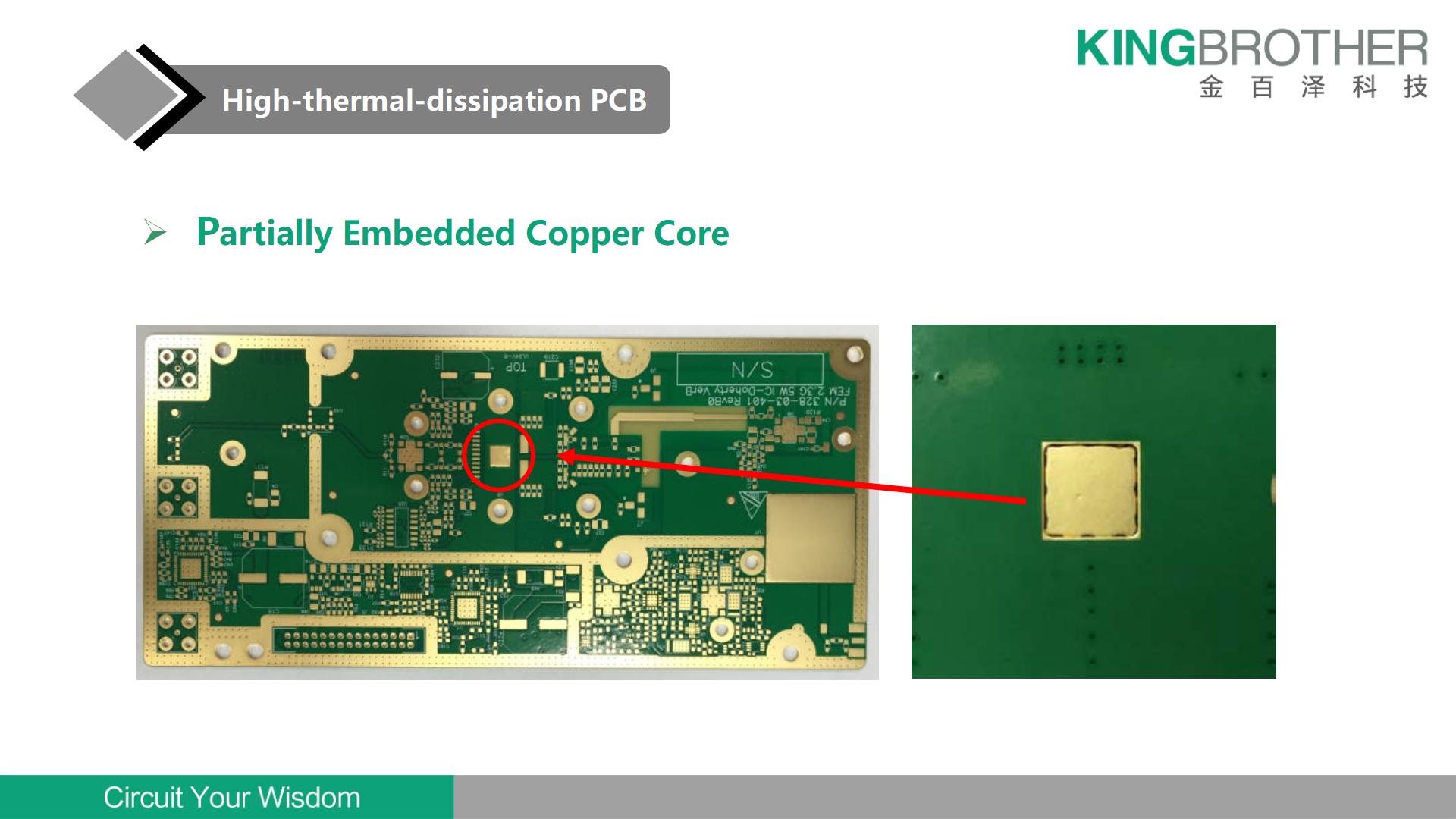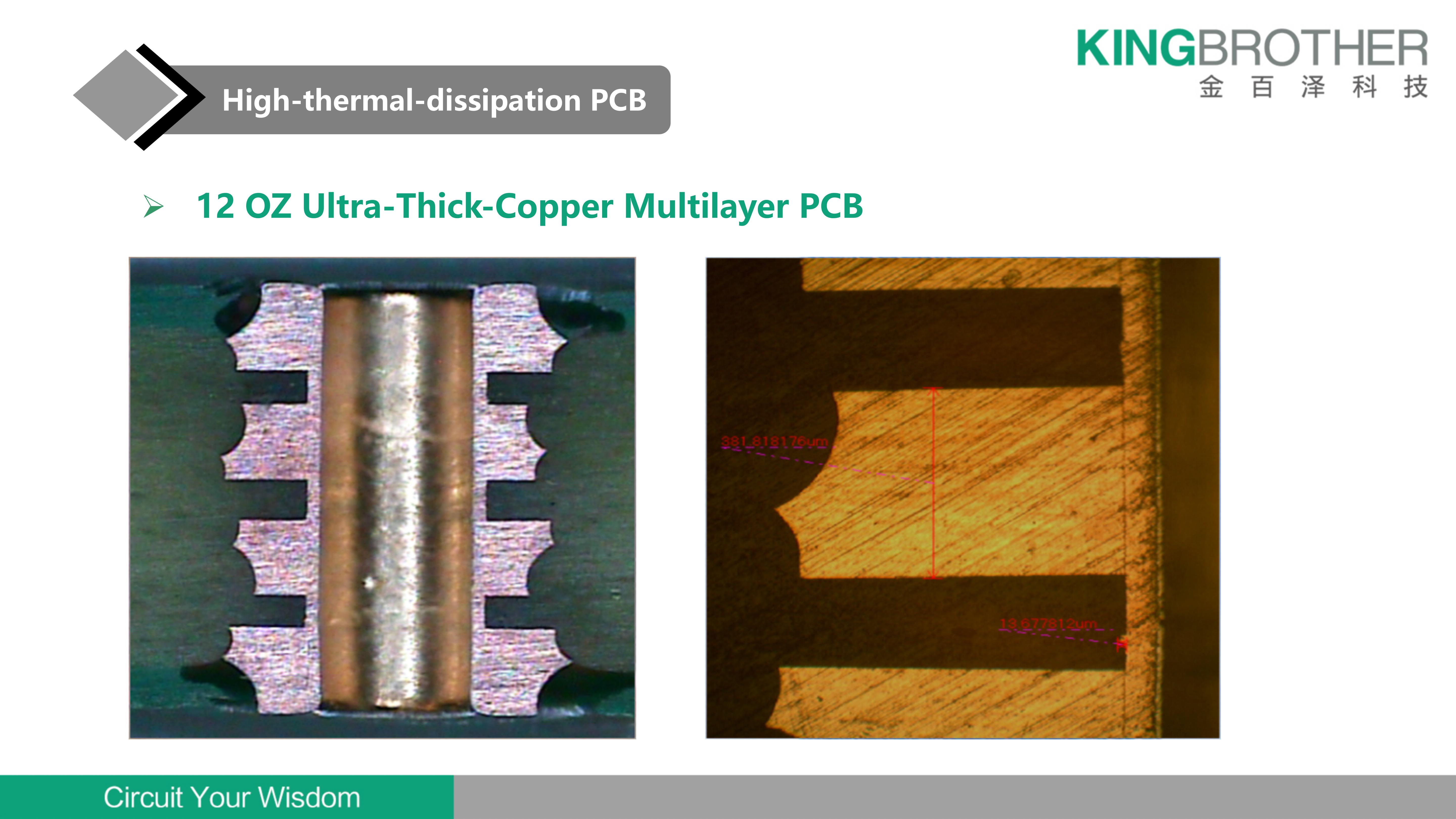In today’s high-performance electronics landscape, thermal management has become the primary limitation affecting system performance and reliability. Excessive heat generation causes component failures, reduces system efficiency, and shortens operational lifespans across power electronics, automotive systems, and high-frequency applications. As power densities continue to increase exponentially, traditional FR4 PCBs are proving inadequate for managing these increasing thermal management requirements.
Copper core PCBs have emerged as an advanced thermal management solution, offering superior thermal conductivity that’s up to 10 times better than standard materials. This specialized technology enables engineers to design compact, high-performance systems that would not be achievable with conventional PCB substrates.
Standard PCBs struggle in high-power applications; systems generating significant heat, like motor drives, electric vehicle systems, and 5G infrastructure, because they can’t effectively remove heat from critical components. This thermal management failure causes component breakdowns, reduced performance, and costly system failures across automotive, telecommunications, and power industries.
Standard FR4 PCBs act like thermal insulators, with extremely low thermal conductivity of just 0.3-0.4 W/m·K. To put this in perspective, copper conducts heat over 1,000 times better than FR4. This creates excessive heat accumulation at component junction points, where temperatures can exceed safe operating limits.
Real-World High-Power Application Failures:
Modern automotive electronics operate in demanding conditions that challenge standard PCB materials. Electric vehicle systems create extreme thermal and electrical stresses:
Operating Conditions:
5G base stations and high-frequency applications push standard PCBs beyond their thermal limits. These systems face specific challenges that standard materials cannot address:
Performance Impact from Thermal Issues:
Thermal-related failures account for 55% of electronic failures, creating a significant financial impact. These disruptions can incur $5,000–$67,000 per hour in direct revenue losses for enterprises.
The Result: Standard PCBs force engineers to balance performance against thermal reliability – a trade-off that increases costs, limits power density, and constrains innovation in high-performance applications.
A copper core PCB is a specialized printed circuit board featuring a solid copper substrate as the core material, replacing the traditional FR4 fiberglass core. This PCB copper core construction provides high thermal conductivity of 401 W/m·K – approximately 1000 times better than standard FR4 materials. The copper core acts as an integrated heat spreader, efficiently conducting heat away from power components and distributing it across the entire board area.
| Feature | Standard FR4 PCB | Copper Core PCB |
|---|---|---|
| Thermal Conductivity | 0.3-0.4 W/m·K | 401 W/m·K |
| Operating Temperature | -40°C to +130°C | -40°C to +150°C |
| Current Carrying Capacity | Limited | 5-10x higher |
| Weight | Light | Heavier |
| Initial Cost | Lower | Higher |
| Long-term Reliability | Standard | Higher |
Heat Dissipation: Copper core PCBs function as integrated heat spreaders, conducting heat from localized sources and distributing it across the entire board area. The high thermal mass provides thermal buffering, smoothing temperature fluctuations, and reducing thermal cycling stress.
Electrical Performance: Beyond thermal advantages, copper cores provide high electrical conductivity (59.6 × 10⁶ S/m), reducing ground plane resistance and improving power distribution with lower voltage drops and enhanced signal integrity.
Mechanical Strength: The solid copper core significantly increases PCB mechanical strength and dimensional stability, preventing board flexing that can cause solder joint failures in demanding environments.
Copper metal core PCB designs deliver up to 60% better heat dissipation compared to aluminum core alternatives and 1000% improvement over FR4 substrates. This thermal performance enables higher power densities and eliminates the need for bulky cooling systems, making them ideal for copper core PCB design in space-constrained applications.
The high electrical conductivity of copper enables current carrying capacities 5-10 times higher than standard PCBs. This capability is essential for power electronics, motor drives, and battery management systems requiring high-current operation above 10 amps.
Effective thermal management significantly extends component lifespan by operating at lower temperatures. Additionally, by eliminating external heat sinks and active cooling systems, copper core PCBs enable more compact system designs for automotive electronics and portable devices.
The solid copper core acts as an effective electromagnetic shield, reducing EMI and improving signal integrity – particularly valuable in high-frequency applications and mixed-signal designs where signal quality is paramount.
Choose copper core PCBs when your application requires:
While copper core PCBs have higher initial costs, calculate total cost of ownership, including:
Often, the superior performance justifies the investment through reduced system complexity and enhanced long-term reliability.
| Industry | Primary Applications | Key Benefits | Typical Thickness |
|---|---|---|---|
| Automotive | LED lighting, EV charging, power steering | High current handling, thermal stability | 3–6 OZ |
| Medical | X-ray systems, MRI equipment, surgical devices | Ultra-high reliability, precision control | 2–4 OZ |
| Telecommunications | 5G infrastructure, base stations, RF amplifiers | Signal integrity, frequency stability | 3–5 OZ |
| Power Electronics | Motor drives, inverters, battery management | Maximum current capacity, heat dissipation | 4–6 OZ |
| Industrial Control | Automation equipment, welding systems | Harsh environment operation, durability | 3–5 OZ |
Electric Vehicle Battery Management: Managing 400+ amp charging currents requires the superior thermal management that only copper core PCBs provide, ensuring safe operation and extended battery life.
5G Infrastructure Equipment: High-power RF amplifiers in 5G base stations require superior thermal management for stable operation and maintaining signal quality across temperature variations.
Medical Imaging Power Systems: X-ray and MRI equipment requires reliable high-power operation with minimal thermal drift to ensure accurate imaging results and patient safety.
Thermal Via Placement: Strategic placement creates efficient heat transfer paths from components to the copper core. Design guidelines recommend via spacing of 0.5-1.0mm around high-power components with a minimum thermal via diameter of 0.2mm.
Component Placement Guidelines: Position heat-generating components directly over the copper core, maintain adequate spacing between high-power components (minimum 5mm), and place sensitive circuits away from high-power areas.
Layer Stack-up Requirements: Copper core PCBs require specialized designs accounting for thermal expansion differences and proper prepreg selection for thermal interfaces to prevent warping and delamination.
Aspect Ratio Limitations: Maximum recommended ratios are 8:1 for through-hole vias with copper cores >2mm, with minimum drilling diameters of 0.15mm mechanical and 0.10mm laser drilling.
Impedance Control Adjustments: The PCB copper core affects signal impedance calculations. Work with your copper core PCB manufacturer to adjust dielectric thickness and trace geometry for proper high-frequency performance.
With 28 years of experience, KINGBROTHER stands above other copper core PCB manufacturers through comprehensive capabilities and industry expertise.



| Items | Conventional | Non-Standard |
|---|---|---|
| Copper Core Material | OFHC Copper | Customer Provided |
| Copper core Size | Thickness:1.0-3.0mm; Size: Cylindrical Copper Coin≥4.0mm;Square Copper Core(One side≥6.0mm) |
CFT Review |
| Embedding Method | Fully-Embedded Copper Core; Partially-Embedded Copper Core | / |
| Location Tolerance | ±0.15mm | ±0.10mm |
| Step Depth Tolerance | ±0.15mm | ±0.10mm |
| Flatness | ±0.05mm | ±0.025mm |
| Surface Treatment | ENIG | ENEPIG |
KINGBROTHER’s ultra-thick-copper PCB technology addresses the most demanding high-current and thermal management applications. Our specialized manufacturing processes enable copper thicknesses up to 18 OZ for prototyping applications, supporting power electronics requiring superior current carrying capacity and heat dissipation performance.
Precision etching control ensures accurate circuit formation on both sides of ultra-thick copper layers, maintaining dimensional accuracy and electrical performance across varying copper thicknesses.
Advanced alignment systems maintain precise registration between front and back circuits, ensuring optimal electrical connectivity and thermal performance in multi-layer ultra-thick copper designs.
Specialized lamination processes accommodate extreme copper thicknesses while maintaining board integrity, preventing delamination, and ensuring reliable thermal and electrical performance in demanding applications.


| Items | Conventional | Non-Standard |
|---|---|---|
| Layers | 4L | 6~10L |
| Maximum panel size | 307mm×459mm | 457mm×610mm |
| Trace width/space | 0.5mm/0.5mm | 0.4mm/0.4mm |
| Materials | FR4 | High-Thermal-Conductivity Materials |
| Thermal Conductivity | 0.2~0.3W | 1.5~2.0W |
| Finished Copper Thickness | 10-12OZ | 15~18OZ |
| Interconnect Method | Mechanical Drilled Through-Hole | Mechanical Blind & Buried Vias |
Industry-Leading Specifications: Our copper core PCB factory offers up to 18 OZ copper thickness for prototyping and 6 OZ for mass production, enabling high-performance thermal management applications in the industry.
Specialized Design Support: Our engineering team provides thermal modeling and analysis services, optimizing copper core PCB designs for maximum performance using advanced simulation tools and thermal interface optimization.
Flexible Production Options: No MOQ requirements support prototype development through volume production, with quick-turn prototyping services offering 24-48 hour turnaround options for rapid development cycles.
Comprehensive Quality Standards: ISO 13485 (medical devices), ISO/TS 16949 (automotive), ISO 9001/14001 (quality/environmental), and UL certification ensure compliance across regulated industries.
Advanced Testing Capabilities: Our copper core PCB factory employs comprehensive testing, including thermal cycling (-40°C to +150°C), thermal resistance measurements, high-current stress testing, and impedance verification for reliable performance validation.
Complete Documentation Support: Full traceability and documentation support regulatory requirements and quality assurance needs essential for regulated industries like medical and automotive applications.
Copper core PCBs offer superior thermal conductivity (401 W/m·K vs 170 W/m·K for aluminum) and better electrical performance, making them ideal for high-power applications despite higher material costs. Copper also provides better mechanical strength and EMI shielding.
Consider a copper core PCB when your application has current requirements >10 amps, heat density >5 W/cm², space constraints preventing external cooling, or mission-critical reliability requirements. Calculate power dissipation and thermal constraints for your specific application.
Automotive electronics, medical devices, power electronics, telecommunications infrastructure, and industrial control systems benefit most due to their high-power, high-reliability requirements and harsh operating environments.
Typical applications use 2-4 OZ for medical devices, 3-5 OZ for telecommunications, 3-6 OZ for automotive, and 4-6 OZ for power electronics. KINGBROTHER offers up to 18 OZ for specialized prototyping applications.
Copper core PCBs represent a specialized thermal management technology for modern thermal management challenges, delivering superior heat dissipation, enhanced current carrying capacity, and improved system reliability. From automotive LED systems to 5G infrastructure, these advanced substrates enable high-performance applications not achievable with traditional materials.
KINGBROTHER’s 28+ years of PCB expertise, combined with industry-leading copper thickness capabilities and comprehensive certifications, position us as your ideal copper core PCB manufacturer. Our no-MOQ prototyping services and rapid turnaround capabilities ensure your project progresses smoothly from concept to production.
Ready to solve your thermal management challenges?
Contact our technical team today to discuss your copper core PCB requirements and discover how our advanced manufacturing capabilities can accelerate your time-to-market while optimizing performance and costs.